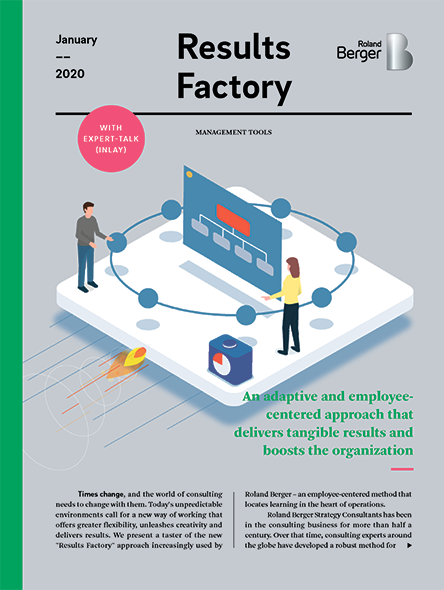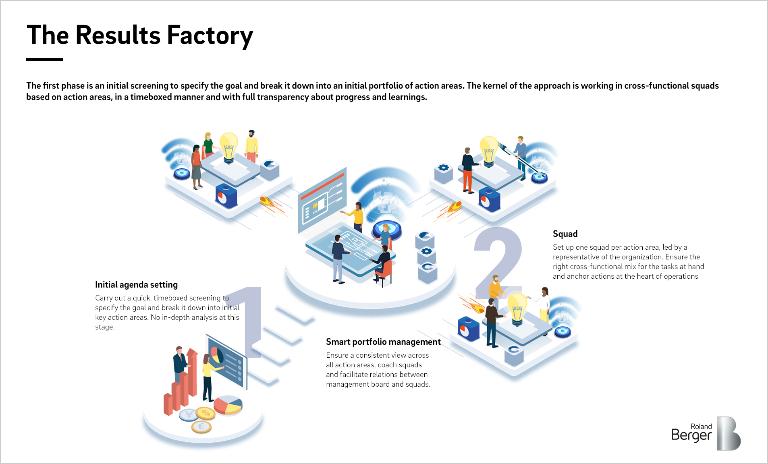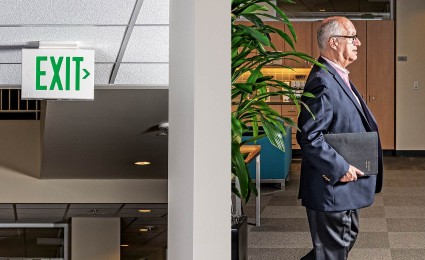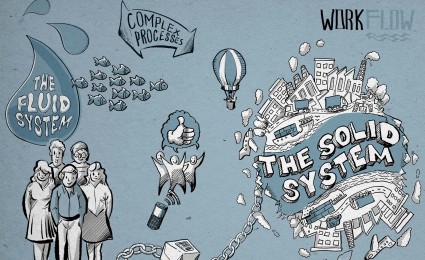" In the fast-changing environment, companies that want to retain or increase their competitive advantage must successfully implement new ways of working. "


Results Factory: a results-driven approach to organizational change
The implementation of a results-driven approach for new ways of working
The world changes at a rapid pace, and in the sphere of organizational design, this urgently calls for the implementation of new ways of working. A usual approach for a company to reorganize working processes relies on a three-step approach: analysis, concept design, and preparation for implementation. Despite being able to provide control, stability, and generally consistent results, this method comes with its shortcomings.

Why the “Results Factory” approach?
In a fast-changing environment, companies that want to retain or increase their competitive advantage must successfully implement new ways of working. These new methods consider complex environments – where cross-functional flexibility, agility, creativity, and an employee-centered perspective lay at the core of the business. To answer these needs, Roland Berger developed the “Results Factory” framework, named as such because of its ability to churn out results in almost a production-line manner. It combines our established results-driven approach to consulting with our broad experience in three key areas: large-scale performance management and investment programs for major corporations, operational management, and programs implementing agile methods at board level.
What are its key elements?
- Cross-functional teams: Set the overall goal and assign tasks to interdisciplinary quads across the line organization.
- Simple communication: Strive for transparency when it comes to facts, ideas, and results. Shorten lines of communication to ensure speed and quality in decision-making.
- Rapid iterations: Drive progress in short, rapid iterations with tangible results. This will allow you to check if work is moving in the right direction.
- Leadership that empowers: Establish end-to-end responsibilities within the line organization, focus support on enabling the squads, and drive change on the job.
How does "Results Factory" differ from the traditional approach?
The first phase consists of an initial screening that specifies the goal and breaks it down into a portfolio of action areas. The purpose of this approach is working in cross-functional squads based on action areas, in a timeboxed manner and with full transparency about progress and learnings.
- Initial agenda-setting: Focus on carrying out a quick, timeboxed screening that specifies the goal and break it down into primary key action areas. No in-depth analysis at this stage.
- Smart portfolio management: This ensures a consistent view across all action areas, coach squads, and facilitates relations between the management board and squads.
- Squad: Allocate one squad per action area led by a representative of the organization. Make sure the right cross-functional mix for the tasks is at hand and anchor actions at the heart of operations.
The “Results Factory” framework offered by Roland Berger is an employee-centered perspective. It is strengthened by a results-driven approach that allows for greater flexibility and promotes in-house creativity, at the same time facilitating new ways of working that are perfectly tailored to modern, fast-moving environments. This approach ensures that changes have traction within the organization and at the same time removes the need to commit large budgets to actions whose results are not yet proven.

Results Factory: a results-driven approach to organizational change
![{[downloads[language].preview]}](https://www.rolandberger.com/publications/publication_image/RB_STU_606_Results_Factory_cover_1_download_preview.png)
New ways of working – transforming the workplace using an employee-centered perspective.






